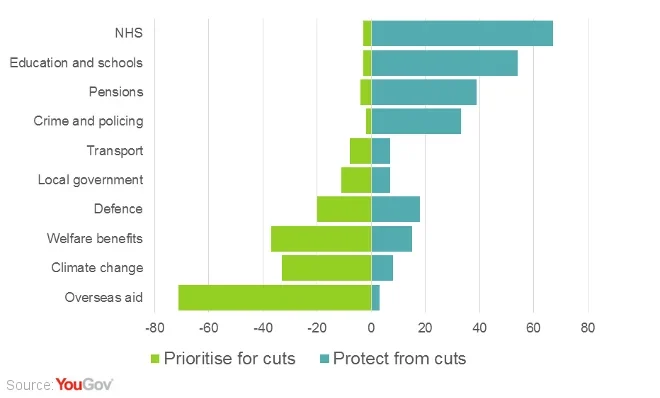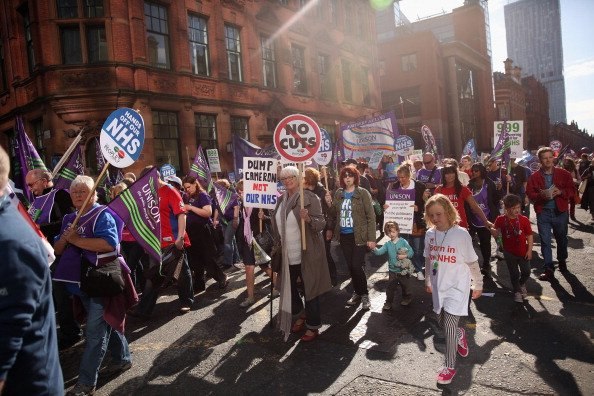Anthony Wells on the most controversial cuts
There are many different debates over spending cuts – whether they are necessary at all, how their impact is spread between the rich and poor, the old and young, the north and south. Another angle is which departments and services are protected, which are cut or even prioritised. On this there is actually a lot of consensus on many areas the public are in agreement about which areas of public spending should be protected and which should be protected – opinion divides on just a few key areas.
In our Sunday Times poll at the weekend we asked people to pick out which areas of government spending they most wanted to see cut and which areas they most wanted to see protected from cuts. People were allowed to pick up to three in each area – one cannot prioritise or protecting everything, its a question of priorities. Putting the two sets of figures side by side gives us a good picture of public attitudes towards where the cuts are made.

For most of the public services, public opinion is almost wholly one way. Whether or not people support the principle of cuts, hardly anyone wants to prioritise the NHS, police, schools or pensions for cuts. All three are widely seen as areas that should be protected. At the other end of the scale is overseas aid, the one area that a majority of the public want to see cut, and which only a tiny proportion of the public think is one of the most important areas to protect from cuts. Again, public opinion is almost wholly in one direction. The only other area that comes close to overseas aid as a popular area to cut is action on the environment and climate change, which a third of people want to see cut, but only 8% want to see protected.
There are a couple of areas (transport and local government) which fail to elicit much passion in either direction. The two most interesting areas though are welfare spending and defence, the only two areas where a substantial proportion of the public feels strongly in both directions. So for welfare, 37% of the public actively support cutting its budget to the point where they want to see the area priorised for cuts, but 15% of people think welfare benefits are one of the most important areas to protect against any cuts. For defence 20% think it is an area that should be prioritised for cuts, 18% think it is one of the areas that should be defended against any cuts.
It should come as no surprise that welfare and defence cuts have therefore been some of the most controversial: defence cuts within the Tory party (as Conservatives are the most likely to see defence as something that should be protected), Welfare cuts between the parties (as it is Labour supporters who are most likely to oppose welfare cuts). It's because while the current necessity of cuts is a matter of great debate, in most areas people agree on whether cuts are a good thing per se, or something to be avoided if possible. Welfare and defence spending are the only two areas where a substantial proportion of people think cuts are to be welcomed and a substantial proportion think spending should be defended above other areas.
Image: Getty









